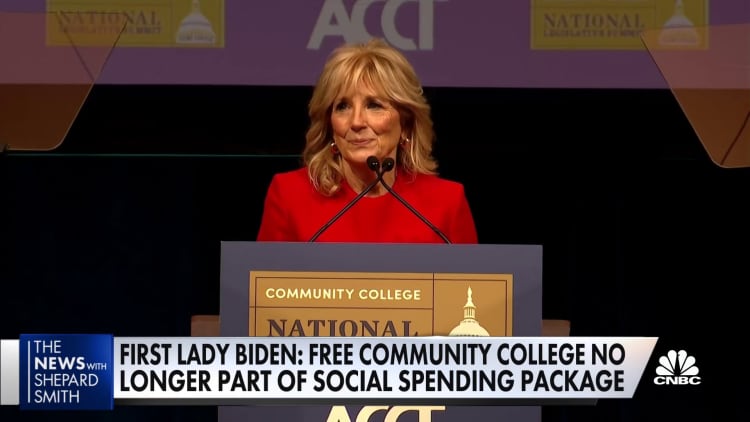Going to community college and then transferring to a four-year school is often considered one of the best ways to get a degree for significantly less money.
More students are choosing community college at the outset. Enrollment last fall at community colleges rose 2.6%, far more than any other institution type, according to the National Student Clearinghouse’s latest research.
However, nationwide, only about one-third of students who start at community colleges ultimately transfer to four-year schools, and fewer than half of those transfer students earn a bachelor’s degree within six years.
That means just 16% of all community college students attain a bachelor’s degree, according to recent reports by the Community College Research Center at Columbia University, the Aspen Institute College Excellence Program and the National Student Clearinghouse Research Center.
More from Personal Finance:
How the affirmative action decision affects college applicants
Biden administration forgives $4.9 billion in student debt
College enrollment picks up, but student debt is a sticking point
“Students often believe their chances of success are much greater than they are — that’s terribly unfortunate,” said Josh Wyner, executive director of the Aspen Institute College Excellence Program.
Further, among low-income students and students of color, the numbers are even more stark: 11% of low-income students transfer and complete bachelor’s degrees in six years, while for Black students, the share drops to just 9%.
Meanwhile, 69% of students who start at a four-year public university complete their degree within six years. At four-year private schools, the completion rate is 78%.
“Too many students are failed by policies and practices that dictate whether and how effectively students transfer from community colleges to universities, particularly students from historically underserved groups,” said Tatiana Velasco-Rodriguez, lead author of the reports and a research associate at the Community College Research Center.
When transferring from community college works
The transfer process can work, experts also say.
Research shows that students who complete an associate’s degree at a community college before transferring have higher success rates, as do students who start coursework in high school through dual enrollment.
Students who begin on a more structured pathway and who benefit from additional resources and advice ultimately do better, according to Velasco-Rodriguez.
To improve transfer outcomes across the board, “we need to apply that to other students,” she said.
However, that responsibility should fall on colleges and universities, rather than high school seniors and college-level freshmen, she added. “This is a call to the higher education system to figure out how to serve your students.”
State-based policies can help
Some states already have better systems in place to support the transfer process and at least 35 states even have policies that guarantee that students with an associate’s degree can then transfer to a four-year state school as a junior.
“There are states like Florida that have very good transfer policies and they tend to do better than the national average,” said the Aspen Institute’s Wyner.
To transfer to the University of Central Florida, for example, community college students sign up for a program called UCF Connect, and they are guaranteed admission if they earn their associate’s degree.
Still, many states don’t track how students are doing once they transfer to a four-year institution, the experts also noted, which is key for improving outcomes across the board.
“The real question is how community colleges and four-year universities can partner to make good on their promise,” Wyner said.
Subscribe to CNBC on YouTube.
Don’t miss these stories from CNBC PRO:
Credit: Source link




